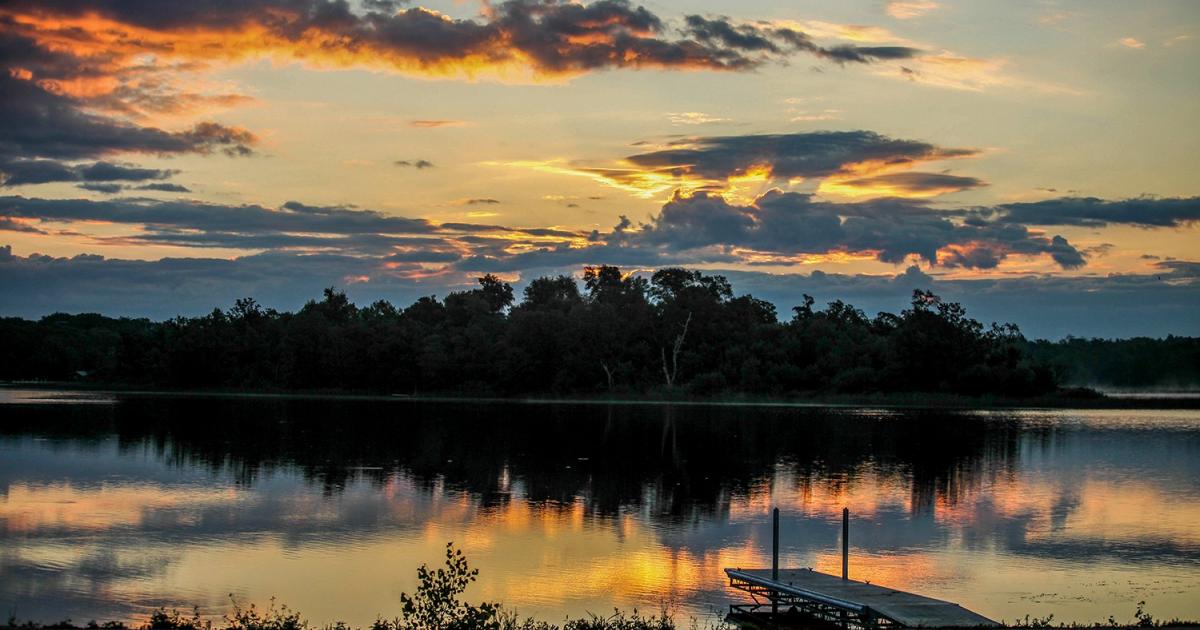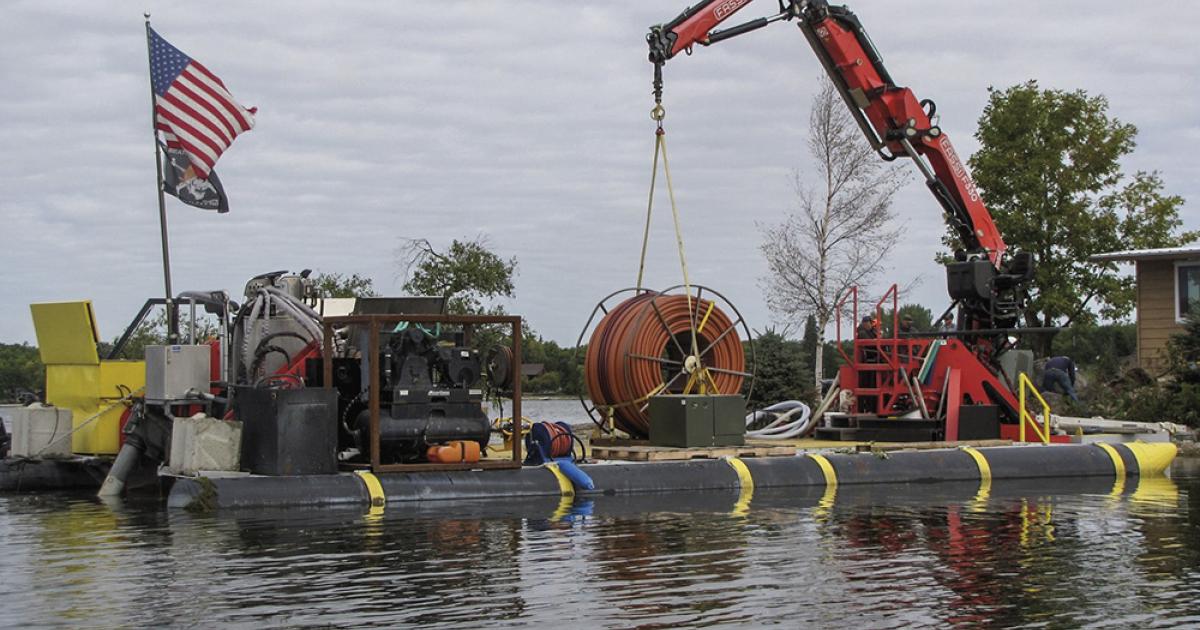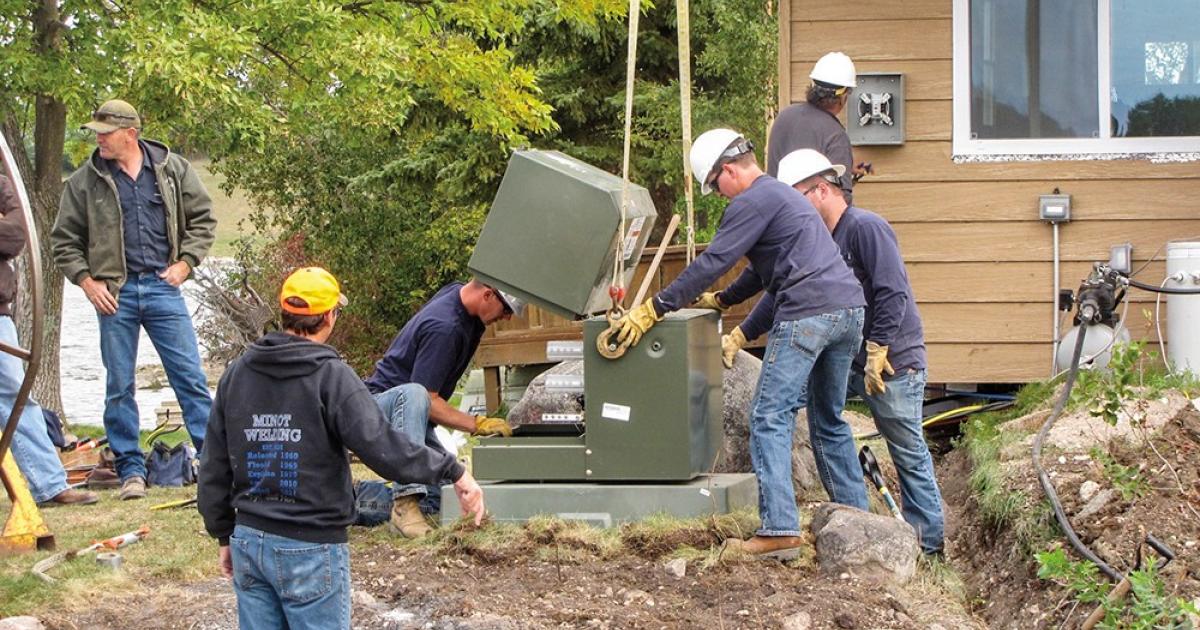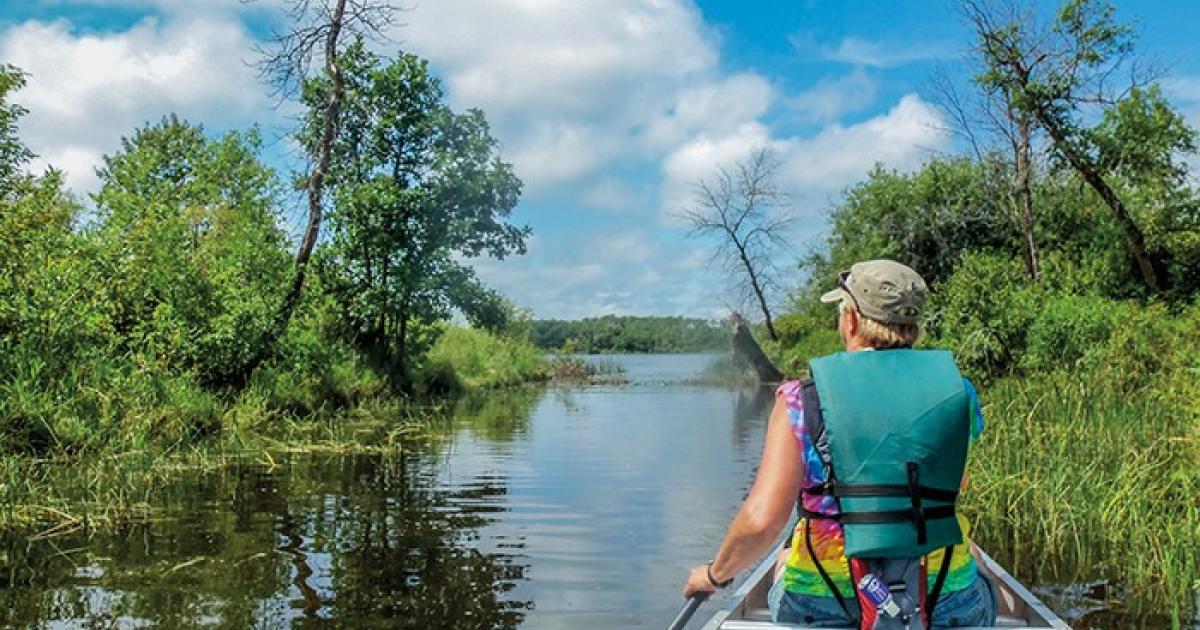Many North Dakotans get the most out of summer with time spent at the lake. But over the past few decades, more are choosing lake living in all four seasons.
That’s the case for North Central Electric Cooperative (NCEC) General Manager Wayne Martian, who has lived on Lake Metigoshe in the Turtle Mountains with his wife, Trish, for the past 20 years.
Lake Metigoshe Photo by N.D. TOURISM
“It’s so relaxing. Having a view of the water is one of the greatest things,” he says. “Living on the lake, your scenery is changing all the time. When we lived in town, all you see is snowpiles in the winter, where at the lake, even in wintertime, every time you look out, something has changed.”
Martian estimates there to be about 900 homes around Lake Metigoshe. NCEC powers about 90 percent of the lake, and Manitoba Hydro serves the smaller portion on the Canadian side. While Lake Metigoshe itself spans only 3 miles from the Canadian border to its southern tip and 1.5 miles from east to west, there are 26 miles of shoreline.
“If you look at Google Earth, you’ll see how the shorelines meander in and out,” Martian says. “It creates a lot more space for living, compared to a perfectly round lake of the same size.”
That natural uniqueness, coupled with the shift from seasonal lake cabins to more year-round homes, has not only changed the landscape of Lake Metigoshe, but it can present unique challenges for utilities. And while serving lake country is not new for electric cooperatives in North Dakota and across the country, it requires added coordination, investment and a little creativity.
LAKE LOAD CHALLENGES
Years ago, Lake Metigoshe was served from one feeder at NCEC’s Dunseith substation, which transmitted all the power required by the cooperative’s lake customers at the time. At peak, when energy demand was the highest, Martian estimated the electricity load to be about ½ megawatt (MW). Today, the lake is serviced by two substations and has a summer peak of 2.4 MW and a winter peak of 6 MW.
“It’s just been a lot of growth through the years of the cooperative,” Martian says. “When I started (39 years ago), the lake experienced its highest peaks in the summer, and as you can imagine, it happened on the Fourth of July. Now, with the conversion from little cabins to year-round homes with electric heat, our peak occurs in the winter.”
To meet this increase in cooperative members’ electric demand, NCEC has made significant investments over the years to upgrade electrical infrastructure and improve service. The cooperative uses both underground and overhead lines and also has cable under the lake. Martian recalls earlier efforts to get power to some of Lake Metigoshe’s islands. With no place for poles or plowing cable, the cooperative ended up putting in conduit, letting it fill with water, to create a loop around the island itself. Another job required putting cable and a plow on an island in the winter, when the lake froze up, and winching the cable to the mainland in the spring.
“Even that technology has changed and the ability to get power out to some of those areas,” Martian says. “Nowadays, you would just bore from the shore all the way out to the island.”
Evidenced by looking at the Lake Metigoshe map, it can be more challenging serving customers here than in a city laid out in blocks and lots. Utility corridors aren’t clearly defined, creating problems for some utility projects. To work through such challenges, NCEC cooperates and coordinates with other utilities, including the local telecommunications cooperative and sewer district.
And one ongoing challenge electric cooperatives encounter in providing power to lake country is also one of the many things that make lake living enjoyable – trees.
“It’s really a challenge to maintain that right of way,” Martian says. “We end up spending a fair amount of money up at the lake just to keep the right of way cleared.”
But it’s money well-spent. Tree trimming is necessary to avoid falling branches from damaging lines and potentially dangerous winter outages. The cooperative also does its best to preserve the natural landscape. Skilled contractors trim trees to encourage directional growth away from power lines and do so in the fall, when lake activity slows and the leaves have fallen.
“The Turtle Mountains and Lake Metigoshe are a unique area unlike other places in North Dakota,” Martian says. “There are a lot of trees and it is a beautiful place, and we recognize that and we want to preserve that as much as possible.”
FINDING A WAY
Creativity, ingenuity and commitment brought power to rural America decades ago, through the electric cooperative network, when industry said otherwise. From the first glow of barn lights on the Dakota prairie to the electric firepit glow on Lake Metigoshe today, electric cooperatives have found a way.
“At the end of the day, we want to keep the lights on,” Martian says. “If you see anything as far as our lines – trees near the lines, anything that looks hazardous – call in and report that.”
With their members’ help, electric cooperatives will continue to find a way, whether on the farm, at the lake or even on an island!
Cally Peterson is editor of North Dakota Living. She can be reached at cpeterson@ndarec.com
LAKE METIGOSHE STATE PARK
Nestled in the Turtle Mountains along the U.S.-Canada border, the 1,500-acre Lake Metigoshe State Park is one of the most popular year-round vacation spots in North Dakota. Lake Metigoshe offers northern pike, walleye and perch fishing, and nature-lovers flock to the rolling hills, aspen forests and wetlands. Cross-country skiing and snowshoeing are popular in the winter, and the summer hiking views are hard to beat, through the park’s four trails, totaling about 8.5 miles. The Old Oak Trail, recognized as a National Recreation Trail, is found inside the park boundaries.














